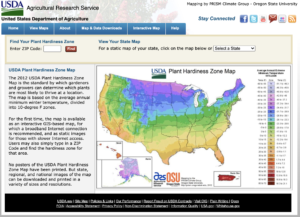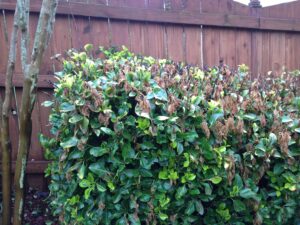Freeze Damaged Plants
go.ncsu.edu/readext?779306
en Español / em Português
El inglés es el idioma de control de esta página. En la medida en que haya algún conflicto entre la traducción al inglés y la traducción, el inglés prevalece.
Al hacer clic en el enlace de traducción se activa un servicio de traducción gratuito para convertir la página al español. Al igual que con cualquier traducción por Internet, la conversión no es sensible al contexto y puede que no traduzca el texto en su significado original. NC State Extension no garantiza la exactitud del texto traducido. Por favor, tenga en cuenta que algunas aplicaciones y/o servicios pueden no funcionar como se espera cuando se traducen.
Português
Inglês é o idioma de controle desta página. Na medida que haja algum conflito entre o texto original em Inglês e a tradução, o Inglês prevalece.
Ao clicar no link de tradução, um serviço gratuito de tradução será ativado para converter a página para o Português. Como em qualquer tradução pela internet, a conversão não é sensivel ao contexto e pode não ocorrer a tradução para o significado orginal. O serviço de Extensão da Carolina do Norte (NC State Extension) não garante a exatidão do texto traduzido. Por favor, observe que algumas funções ou serviços podem não funcionar como esperado após a tradução.
English
English is the controlling language of this page. To the extent there is any conflict between the English text and the translation, English controls.
Clicking on the translation link activates a free translation service to convert the page to Spanish. As with any Internet translation, the conversion is not context-sensitive and may not translate the text to its original meaning. NC State Extension does not guarantee the accuracy of the translated text. Please note that some applications and/or services may not function as expected when translated.
Collapse ▲Gardeners have short memories. Every year we seem to get a late cold snap in late-April or May that threatens to kill our summer annual flowers and vegetables that we impetuously planted early. Thirty two degrees F is freezing but twenty eight degrees F is the killing temperature. My grandmother always said “Only a fool plants before Mother’s Day.”
So it was that the late spring freeze in April 2020 really kicked us gardeners in our horticultural behinds, figuratively speaking of course. Old Jack Frost swooped in out of the north to punish us poor home gardeners with a brutal cold snap that set our gardens back to February 1st. Early-planted annuals were damaged as well as established trees and shrubs that leafed out early due to early-spring warm temperatures.
As usual, some places in the county got hit harder than others. The unfortunate gardeners in the areas hit the hardest not only lost the leaves off of their ornamental plants. Even the leaves were frozen off of the native trees such as Tulip Poplars.
Woody ornamentals vary in their cold tolerance. The USDA Cold Hardiness map designates where certain plants will endure the lowest temperature. One should consult this map which is easily found on the web and in most gardening references, before purchasing plants.
With most frost damaged plants, a wait-and-see approach is usually the best option. Cold damage in plants is caused when low temperatures cause the water in plant cells to freeze. Ice crystals grow and puncture the cell walls in susceptible plant tissue. This renders plant tissues such as leaves into mush.
Woody plants react to cold damage as they would react to pruning. The buds just behind the damaged leaves or stems initiate growth. This new growth becomes this year’s wood and takes over. The dead frozen tissue dries out and is eventually shed.
Herbaceous plants suffer more from cold damage than woody plants do. Often times the tissues are softer and the plants are frozen at temperatures that would generally not hurt most woody ornamentals. Plants like hosta and daylily that regenerate from underground stems and roots are killed to the ground. Given time these plants will regenerate from the roots.
So, my advice is to let frozen plants be. In a couple of weeks they should flush out new growth and any dead tissue can be pruned away. With any luck in couple of weeks we gardeners of short memory will have forgotten all about it.







